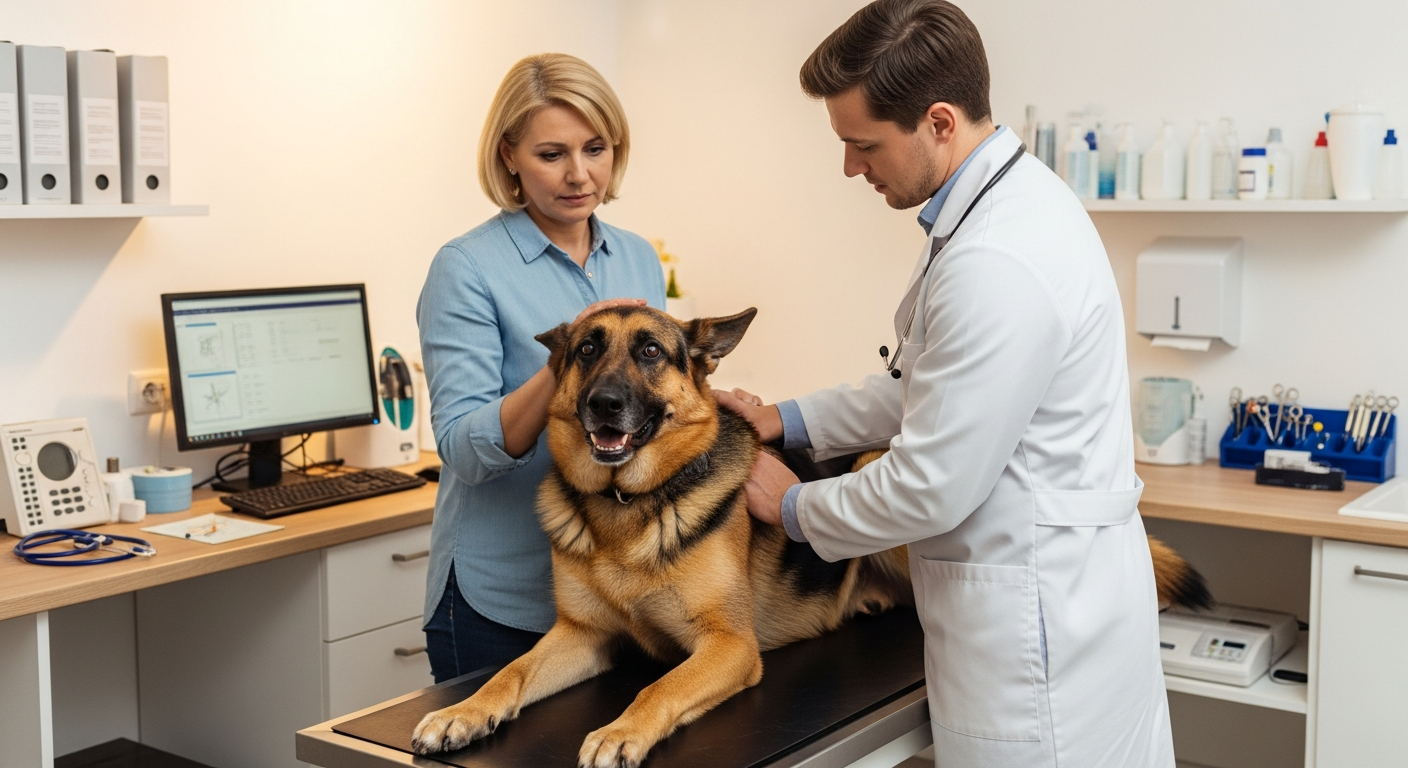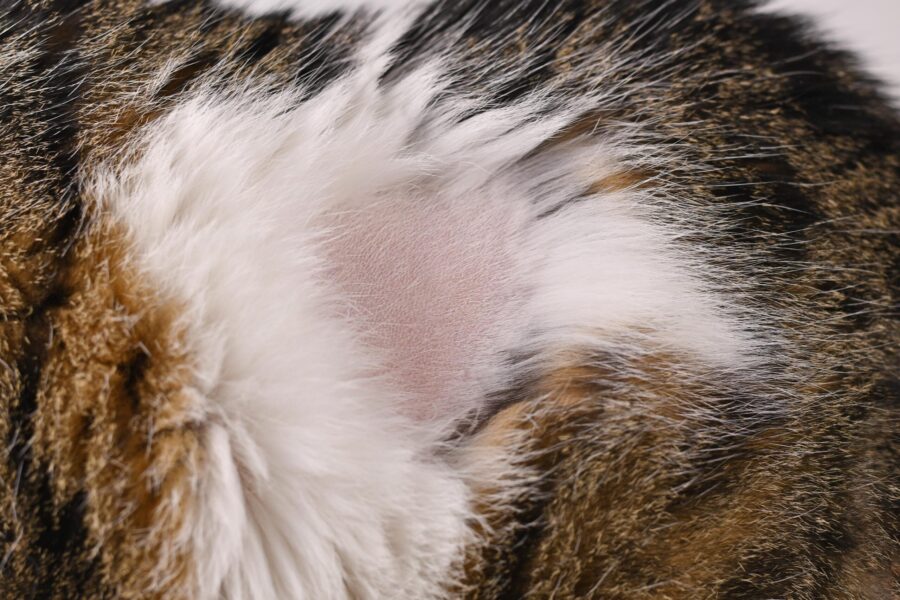A look at how our understanding of neuroplasticity, particularly in the form of neurofeedback, may help companion animals with behavior problems.
Neuroplasticity is the brain’s ability to change in structure or function in response to experience. I described this concept in a previous article in IVC Journal (Summer 2024). Numerous medical schools now teach about physical and functional changes in the brain. Neuroplasticity is also evident in our companion animals, from birth onwards. This article presents some innovative ways our understanding of neuroplasticity can help companion animals.
Can neuroplasticity be applied to behavioral problems?
Many companion animals are abandoned at animal shelters and rescue farms due to various behavioral challenges. These behaviors are commonly due to old mental wounds and traumatic memories impacting on current interactions. Conventional medicine may recommend behavior modifying medications, while natural medicine may offer nutritional or herbal solutions. Animal behaviorists suggest behavioral exercises or modifications. If none of these approaches work satisfactorily, it is not uncommon for euthanasia to be considered.
Certain computerized, cutting edge, neurofeedback for companion animals approaches appear to be helping human brains increase neuroplasticity. One reads EEGs 256 times a second, bringing dissonant EEG recordings in the subconscious into resonance with conscious behaviors. These approaches have helped patients with nerve damage from various neurodegenerative conditions, including strokes, concussions, and other physically damaging incidents.
What about using this neurofeedback for companion animals with behavior problems? Certainly, human and animal brains share great similarities and are merely variations on a theme. So, the question is not that far-fetched.
Training the brain through neurofeedback
In my practice, I’ve always told clients that I never use anything on animals that I have not used on myself. I still follow that philosophy, and have been using an advanced type of neurofeedback device on myself for almost a year. The results have transformed me from a cynical skeptic to an ardent fan.
Essentially, the device uses the power and intelligence of your own brain to improve the latter’s function. My instructor feels that neurofeedback should be a key part of a wellness program and I can sense the truth in this after ten months of using the device.
Many people train their muscles and cardiovascular systems, but not their brains. Training your brain can increase flexibility and resilience, qualities I feel all beings can benefit from. It can make it easier to work through the challenges life throws at us. People report feeling calmer, more focused and patient, and less reactive. They experience improved memory, more energy, increased resilience, and better sleep.
To be clear, a “brain training session” is not a “treatment” because it’s non-invasive and not a medical tool. There are no diagnoses or protocols. In other words, neurofeedback is a non-medical brain-training system with therapeutic effects.
Amazingly, an advanced neurofeedback device measures the electrical current emitted from your scalp 256 times/second, then uses a mathematical procedure to recognize any shifts. When shifts occur, it provides feedback to your brain in the form of interruptions in the music playing through the device.
This neurofeedback device doesn’t create or stimulate new neural pathways. Instead, it helps a person leave behind non-optimal neural pathways. As the saying goes, if “you don’t use it you lose it,” so eventually a human who is training their brain won’t use the non-optimal neural pathways anymore. It helps them become more and more aware of these non-optimal pathways. Training is key here. The more a person trains, the more the results last.
This is indeed neuroplasticity in action, as it allows your brain to continuously adjust. Can you see how this might resolve some undesirable behaviors in our companion animals?
The role of the orienting reflex
The neurofeedback device helps the brain organize and heal itself. It partners with the brain to make changes so no formal diagnoses or scans are required. The device and your brain do the work together in real time.
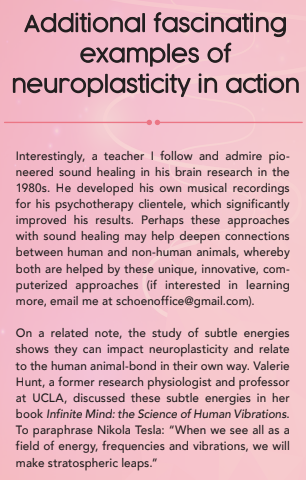
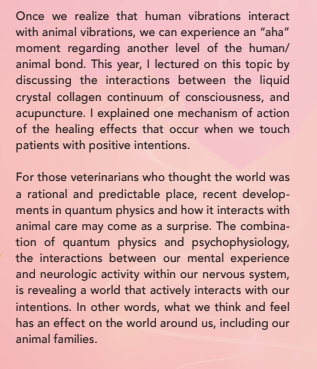
Our “orienting reflex,” another type of neuroplasticity, is put to work every time the neurofeedback system generates a pause in the music. These pauses occur at critical moments to get the best results. The orienting reflex is key to understanding how the device works. This important feature of our own individual CNS is why it’s possible for a person to make changes by themselves, without the need for interventions such as microcurrents, various frequencies, or light therapy.
The orienting reflex helps a person move away from discomfort to comfort. It is up to the individual’s CNS to decide if the abrupt changes and turbulences detected by the system as it interacts with their own cortical activity are comfortable and safe, or uncomfortable and unsafe.
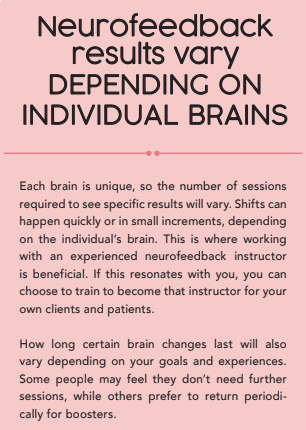
How does this apply to our animal patients?
Interestingly, there is anecdotal evidence that some of these computerized neurofeedback approaches are helping companion animals as well as humans. In Europe, for example, they have been used to successfully calm down nervous and anxious horses whose behaviors likely resulted from previous harmful experiences.
The device I have been using was originally designed for humans, yet some trainers around the world have begun using it with their animal companions. These trainers organized a community support group that demonstrates positive and impressive results with dogs, cats, and horses.
Using a neurofeedback device is not a conscious process and requires no active participation from the individual. Therefore, working with an animal’s brain is really no different from working with a human brain. Certainly, there are challenges in adjusting its use to animals, which aren’t dissimilar to the challenges I ran into when extrapolating electro-acupuncture to animal decades ago.
Pilot project shows beneficial results
A friend who is also a neurofeedback trainer for people tried it out on animal companions in our community and found it was indeed beneficial in situations where nothing else seemed to help. They conducted a small four-week pilot project on dogs and two cats using the advanced neurofeedback device I have been using on myself. The trainer went to the animal owner’s house once a week for 15-minute sessions that were increased to 30-minutes if they felt the animal would not be overwhelmed.
Initially, the study group has been small, with five canine participants, and two cats owned by the trainer. For this particular project, the trainer was looking for animals that displayed anxiety, as well as senior animals entering the palliative care phase of their lives.
In the assessment questionnaire, similar to that used for people yet adapted to companion animals, owners were asked to observe the shift, duration, intensity, and frequency of their concerns. They were also asked questions regarding their animals’ physical and emotional health. The focus was on training, behavior, reaction to other animals or humans, signs of aggression, fear, sleep patterns, vocalization, pain, injury, anxiety levels, and attention, as well as hunger levels and exercise. The owners observed their animal during the week and noted what happened to see if there were any changes as compared to their original concerns.
Often, shifts can happen in small increments and be easily missed. Each pet owner could use assistance from a friend to evaluate the changes occurring in their animals from week to week. For instance, an owner might not be able to see subtle changes, but a friend might notice their dog is calmer.
In one case, neighbors who met an anxious dog daily on the street noticed she was calmer and asked the owners what they were doing. The dog was also more at ease when meeting other canines and had stopped jumping on the owner’s other dog, who had health issues. Dogs in the program with similar issues also responded well. In fact, all the animals in this pilot project showed some improvement overall.
Some dogs exhibited yawning and licking during the sessions, which can indicate they were processing the information. Some were so anxious that a licking pad was needed to keep them occupied during the session, as they were not able to settle down at the beginning. Even when treats were needed to keep a dog occupied, they still improved.
Some were noticeably calmer after the first session, and some were the same, yet positive and steady results were noticed during the first week. By the third week, it was more obvious to owners that their dogs had improved, changed, and adapted to situations or concerns mentioned in their first assessment forms. This occurred despite no dietary changes, training, or supplements.
A couple of the dogs in the study were helped with separation anxiety issues. Another example that involved quite different complaints was an older Rhodesian Ridgeback with urinary incontinence and severe polydipsia which was not responding to appropriate conventional treatments. The signs completely resolved during the program, improving even after just one neurofeedback treatment.
Neurofeedback and cats
You may be wondering about cats as well. The trainer tried the neurofeedback approach on their own two anxious rescue cats. They found the cats were relaxed about being hooked up to the system and didn’t require treats. They underwent the sessions while napping and were quite cooperative.
However, the results appeared to be highly individualistic, even between just two cats. One shook off the ear connections within seven to ten minutes, while the other tolerated them for 15 to 30 minutes. This bears similarities to my own experience when pioneering feline electroacupuncture: the cats would shake off the wires when they were done. Following the sessions, the trainer also noticed the cats were not fighting with each other as often.
While these findings are certainly considered anecdotal, one has to start somewhere. A significant collection of similar anecdotes can indicate a pattern. Whether in conventional medicine or Traditional Chinese Medicine (TCM), patterns are the basis for collecting related symptoms to be considered and classified as a condition.
In conclusion
These unique perspectives on neuroplasticity in companion animals offer innovative approaches that may help many abandoned animals with behavior problems, providing another option besides euthanasia. It does not seem unreasonable to offer these approaches as a possible solution and consider trying them with appropriate patients.



